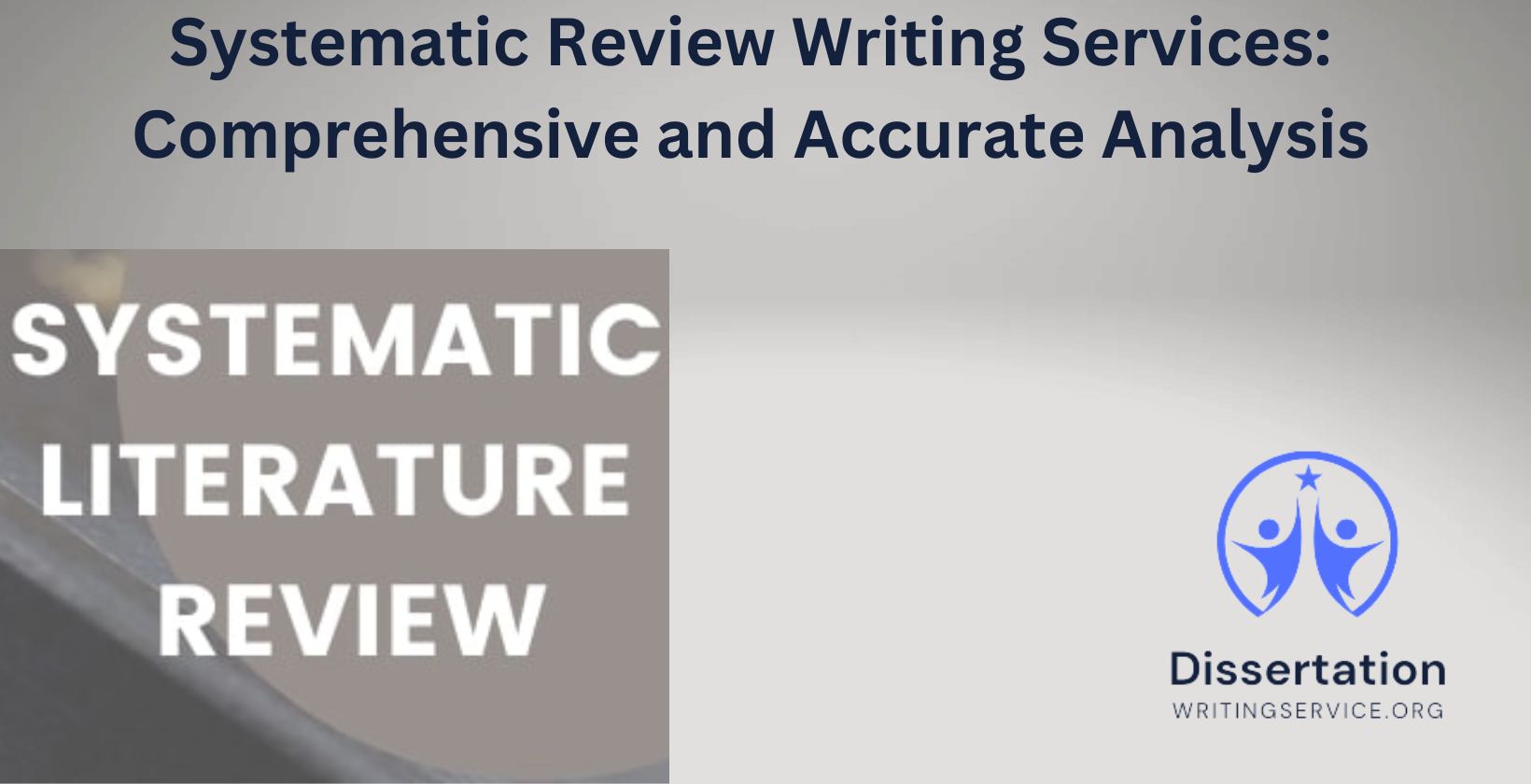Systematic review writing services provide a structured approach to analyzing existing research with accuracy and comprehensiveness. These services utilize well-defined methodologies to ensure reliability, reproducibility, and transparency in synthesizing evidence. Systematic reviews are essential in academia, healthcare, and policy-making, as they guide decision-making based on rigorously analyzed data. Professionals in this field follow standardized protocols to select, evaluate, and synthesize research findings, ensuring that conclusions are evidence-based and unbiased. The process involves meticulous literature selection, data extraction, synthesis, and adherence to reporting guidelines. This article explores the methodologies, quality assurance measures, and processes that define systematic review writing services.
What methodologies ensure the accuracy and comprehensiveness of systematic reviews?
Systematic reviews ensure accuracy and comprehensiveness through rigorous methodologies, including predefined protocols, comprehensive literature searches, and structured data extraction. Researchers use established frameworks such as PRISMA (Preferred Reporting Items for Systematic Reviews and Meta-Analyses) and Cochrane guidelines to maintain consistency. Transparent inclusion and exclusion criteria filter relevant studies, reducing selection bias. Dual independent screening and data extraction minimize errors and enhance reproducibility. Meta-analysis, where applicable, quantifies findings for statistical reliability. These methodological approaches ensure systematic reviews are precise and exhaustive.
How do systematic review services tailor their approach to specific research questions?
Systematic review services tailor their approach by developing precise research questions using frameworks such as PICO (Population, Intervention, Comparison, Outcome) and SPIDER (Sample, Phenomenon of Interest, Design, Evaluation, Research type). These frameworks structure the review by defining key components relevant to the study. A targeted search strategy, including controlled vocabulary and keyword variations, refines literature selection. Data synthesis methods, such as thematic analysis for qualitative studies or meta-analysis for quantitative research, align with the research objectives. Customization ensures that each review directly addresses the specific inquiry.
What criteria are used to select and evaluate literature in systematic reviews?
Systematic reviews use predefined inclusion and exclusion criteria based on relevance, study design, publication date, and quality assessment. Peer-reviewed studies from reputable databases such as PubMed, Scopus, and Web of Science are prioritized. Quality assessment tools, including the Cochrane Risk of Bias Tool for randomized trials and CASP (Critical Appraisal Skills Programme) for qualitative studies, evaluate study validity. Studies with incomplete data, methodological flaws, or significant biases are excluded to ensure reliability. These selection criteria maintain the integrity of systematic reviews.
How do experts handle data extraction and synthesis in systematic reviews?
Experts handle data extraction and synthesis by using standardized templates and dual independent reviewers to minimize errors. Data elements such as study design, sample size, interventions, and outcomes are systematically extracted. Quantitative reviews use meta-analysis to aggregate findings statistically, employing software such as RevMan or STATA. Qualitative reviews use thematic synthesis to identify patterns across studies. Sensitivity analyses and subgroup analyses assess data robustness. These methods ensure accurate and meaningful data integration.
What quality assurance measures are implemented in systematic review writing services?
Systematic review writing services implement quality assurance measures, including protocol registration in databases like PROSPERO, peer review, and adherence to PRISMA guidelines. Dual independent screening, data verification, and inter-rater reliability assessments enhance accuracy. Software tools such as Covidence streamline screening and data extraction, reducing human error. Regular progress audits and expert consultations further maintain quality. These measures uphold the credibility and reliability of systematic reviews.
How do systematic review services address potential biases in research?
Systematic review services address biases by using objective inclusion criteria, multiple independent reviewers, and critical appraisal tools such as the ROBINS-I (Risk of Bias in Non-randomized Studies of Interventions). Publication bias is mitigated by searching gray literature sources like conference proceedings and preprint servers. Sensitivity analyses test the impact of potential biases on findings. Transparent reporting and conflict-of-interest disclosures further ensure neutrality. These strategies reduce bias and enhance the trustworthiness of systematic reviews.
What is the typical timeline and process for completing a systematic review?
The typical timeline for completing a systematic review ranges from six months to one year, depending on the scope and complexity. The process begins with protocol development, followed by comprehensive literature searches and screening. Data extraction and quality assessment precede synthesis and analysis. The final steps involve writing, peer review, and adherence checks against PRISMA or Cochrane guidelines. Regular client updates and iterative revisions refine the final document. This structured process ensures thorough and credible reviews.
How do systematic review services assist in identifying research gaps?
Systematic review services identify research gaps by analyzing inconsistencies, methodological limitations, and underexplored areas in existing literature. Thematic mapping highlights unexplored trends, while subgroup analyses pinpoint populations or contexts lacking sufficient study. Citation analysis reveals frequently referenced but inadequately investigated topics. These findings help researchers refine future study directions and funding priorities. Identifying research gaps enhances the contribution of systematic reviews to scientific progress.
What role do clients play in the systematic review process?
Clients play an active role in defining research objectives, refining search strategies, and providing subject matter expertise. Regular consultations ensure alignment with research goals. Clients review interim reports, offer feedback, and approve key methodological decisions. Their insights guide inclusion criteria adjustments and result interpretations. Continuous collaboration ensures the final review meets academic or institutional requirements. This partnership strengthens the relevance and applicability of systematic reviews.
How do systematic review services ensure adherence to reporting guidelines and standards?
Systematic review services ensure adherence to reporting guidelines by following PRISMA, Cochrane, and other relevant standards. Structured reporting formats, including flow diagrams and summary tables, improve transparency. Quality control checks verify compliance with guideline requirements. Expert reviewers and journal submission consultations further enhance adherence. These practices ensure systematic reviews meet publication and regulatory standards.


